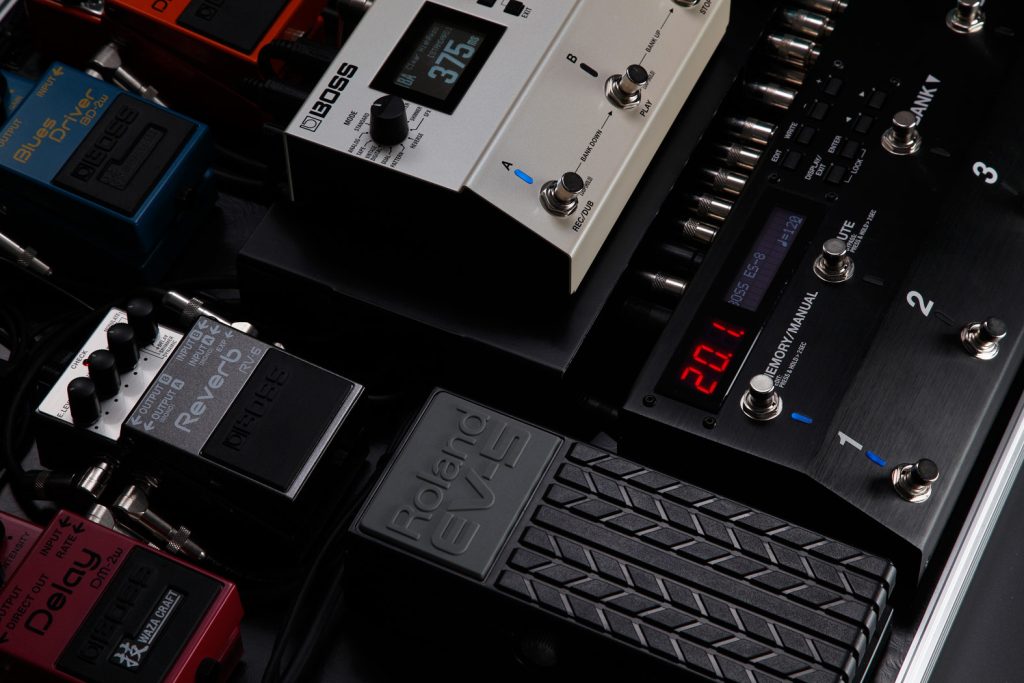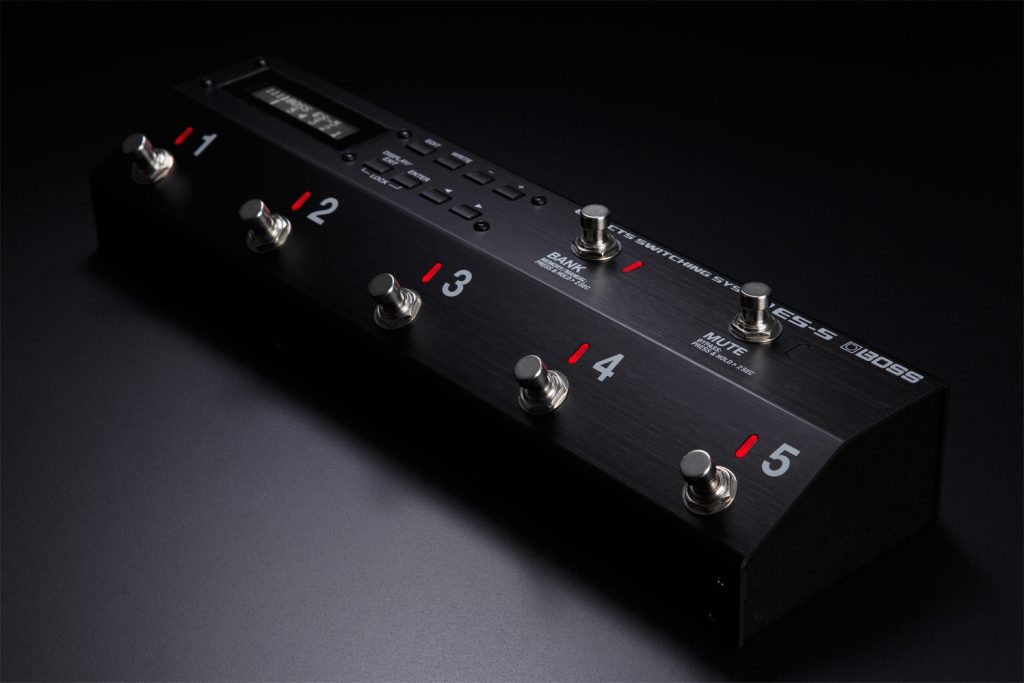Delay pedals are among the most widely used and essential effects pedals on guitarists’ pedalboards. However, when partnered with other effects, the humble delay can open up a broader palette of classic, bold, and experimental new sounds. Learn how to combine delay with other pedals to unlock musical doorways.
Pairing Delay
At the end of the signal chain, a delay pedal can act as an exciter for other effects, enhancing whatever it receives. Still, one of the most valuable functions of the delay pedal is its ability to help harsher sounds sit comfortably in a mix. Widening a slapback echo or softening a long, ethereal delay can turn an aggressive fuzz or tinny chorus into a unique, usable tonal option.
PEDAL COMBINATIONS
Overdrive
Let’s look at some simple pairings for a delay pedal. A great way to excite a lead tone is the combination of a delay pedal and an overdrive like the DS-1W or BD-2W. Delay can help overdriven tones sit better in the mix and add character to an otherwise plain drive tone. There are countless examples of this time-tested duo in action. Still, if you need inspiration, check out Pink Floyd’s “Shine On You Crazy Diamond, Pts. 6-9” for a gorgeous example of a drive and delay pairing.
Recommended Pairings
- BOSS DD-8 and DS-1W
- BOSS RE-2 and BD-2W
Reverb
Delay and reverb can be a perfect combination for everything from classic country tones to ethereal soundscapes. This combo is one of the few pairings where delay often sits before the paired effect. Indeed, combining a delay tone with a reverb pedal like the RV-6 can expand a delay beyond its usual rhythmic purpose by adding a less defined, catacombic echo.
Recommended Pairings
- BOSS DD-8 and RV-6
- BOSS DD-500 and RV-500
"Delay and reverb can be a perfect combination for everything from classic country tones to ethereal soundscapes."
Additional Delay Pedals
Combining a delay pedal with another is a great way to expand one’s sound and achieve fascinating results. Using two stacked delay pedals with different delay times can create intriguing rhythmic variations. This is especially the case when employing different subdivisions. An example would be pairing triplets and quarter notes at different speeds for an expansive dotted-eighth style.
Recommended Pairings
- BOSS DM-2W and RE-202
- BOSS DD-200 and TE-2

Tremolo
Pairing a delay pedal with a tremolo requires great accuracy, as both are rhythmic effects. This means an unmatched pairing can sound jarring and out of time. Yet when used correctly, they can create beautiful classic tones. A tremolo at a moderate speed, partnered with a short slapback echo doesn’t need nearly as much precision. This sound can get set more to the player’s taste, resulting in a rich tone to bring stabbing chords to life.
Recommended Pairings
- BOSS DM-2W and TR-2
- BOSS DD-8 and TR-2
"Running an expression pedal ahead of a delay can create a bowed instrument-like swell."
Expression Pedals
Running an expression pedal like the EV-30 ahead of a delay can create a bowed instrument-like swell. The tails will mask volume dips as the expression pedal helps cover up the plucked instrument attack. This effect works best when a guitarist plays with gusto. A high feedback and effect level on a delay will help to create a vast synth-like wall of sound.
Recommended Pairings
- BOSS DD-3T and EV-30
- BOSS DD-200 and EV-5
Amp Setups
Onboard Amp Channel
It’s often essential to build delay tones around an amplifier’s fundamental sound. When using a moderate to high amount of gain from an amp and running a delay pedal into the front, the delay tails will be less crisp and articulate. Settings with a shorter delay time, like slapback, will be muddy and less usable.
There’s nothing inherently wrong with that; it might be the desired tone. Running a delay into the front of a dirty, driven amplifier can create a gorgeous lo-fi solo tone. However, if one is looking for cleaner tails when overdriven, there are other options.
"Use overdrives and preamp pedals ahead of the delay to keep those delay tails crisp
and clear."
Amplifier as Pedal Platform
Using an amplifier as a pedal platform is an excellent option for both control and clarity. Keep the amp as clean as possible to help delays, modulations, and reverb effects when they’re running through the front. Use overdrives and preamp pedals ahead of the delay to keep those delay tails crisp and clear.
This approach is desirable for players who often use different amps or have large pedalboards. A clean amplifier acts like a PA, amplifying the signal with minimal tonal coloring and letting players control it from their feet. The cleaner the amp, the crisper the delay tails.
Effects Loop and Four-Cable Method
When planning to use an amplifier for an overdriven tone, it’s worth considering either running a delay pedal through the amplifier’s effects loop or utilizing the four-cable method.
Running a delay pedal via an amplifier’s effects loop means the delay occurs after the preamp but before the power amp. Essentially, it moves the amplifier’s tone and drive to a position before the delay. This means the delay tails will be clear and crisp, and the amp tone will be articulate and defined.
With Multi Effects Switcher
Another great way to use a delay pedal is with a switcher, such as the ES-5, ES-8, or MS-3. Switchers allow guitarists to turn multiple pedals on their board simultaneously. In addition, these devices open up entries to MIDI switching options. For example, when using the DD-200 and DD-500, a switcher with MIDI capabilities can change presets at the press of a footswitch. This enables the user to access multiple delay tones without needing pedal adjustment during a performance.

"Switchers allow guitarists to turn multiple pedals on their board on and off at once."
A Comprehensive Tonal Tool
The delay pedal is a versatile and comprehensive tonal tool providing a plethora of options. It is as effective with an overdrive for lead work as in stacked, incremental subdivisions with three other delay pedals as part of a switcher-based rig. The key is to experiment and find the perfect fit.






